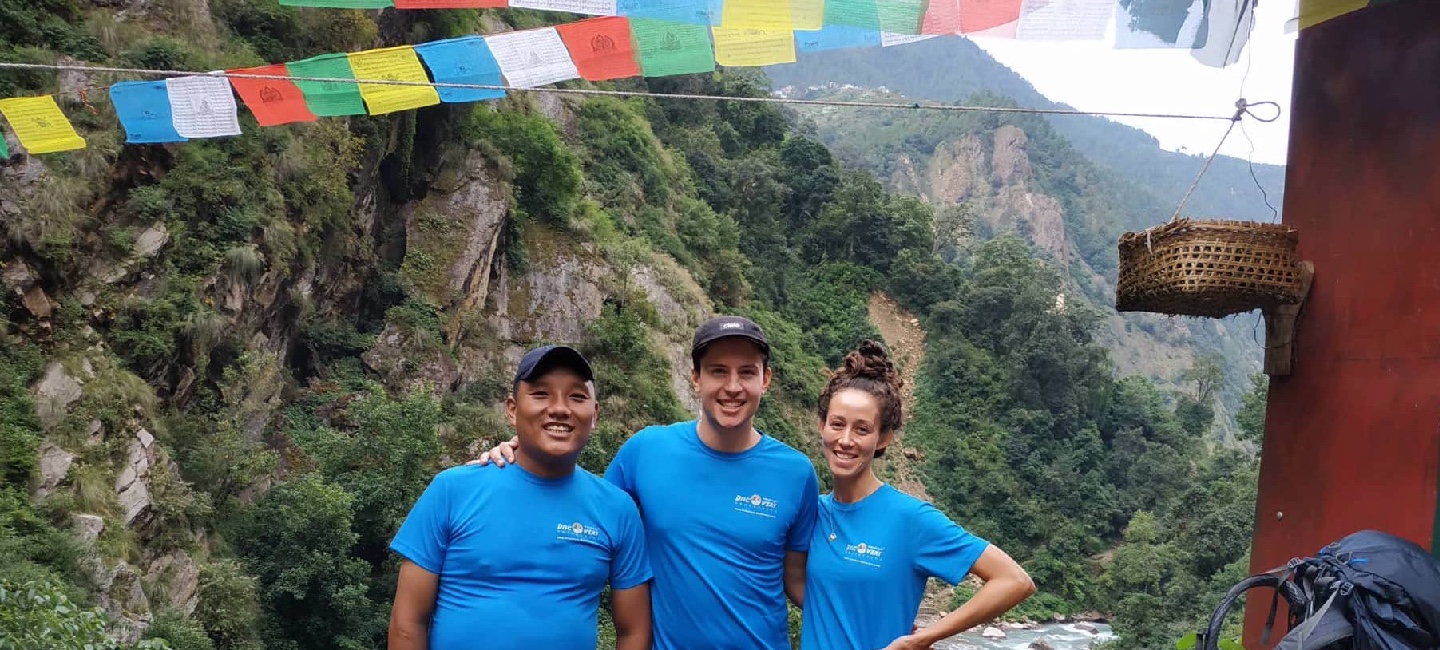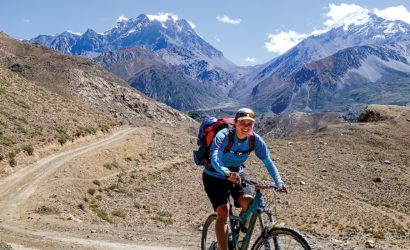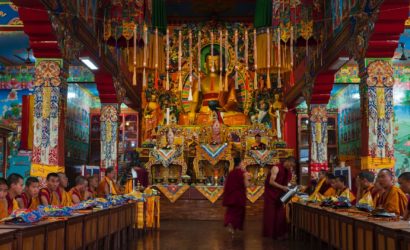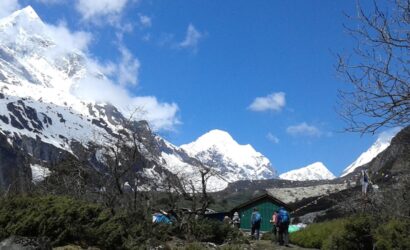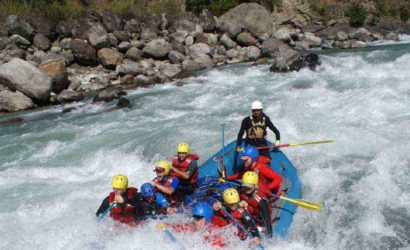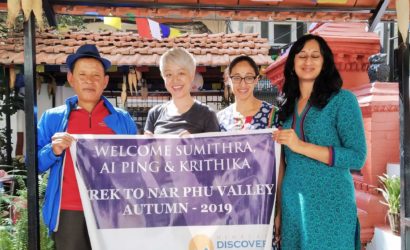Langtang Gosaikunda Trek is a wonderful trip that combines three trekking trails as Langtang Valley Trek, Gosaikunda trek and Helambu Circuit Trek. Following the Trishuli River north of Kathmandu, we travel through Trishuli Bazaar and Dhunche to Syabrubesi, a Tamang village located at the very edge of the Langtang National Park. We then turn east into the Langtang Valley, crossing the river several times as we ascend up along a gorge-like lower section of the Valley.
We pass through oak and rhododendron forests and even cross glacial moraine on our way to the Tamang village of Langtang. We start our trek from Sybrubesi to lama hotel and then we reach to Kyanjin Gompa within three days of our trek commenced Kyanjin Gompa, we go for surroundings visits such as Monastery, Cheese factory.
The lake Gosaikunda is a sacred pilgrimage of Hindus. The lake is visited every year by thousands of visitors during the full- moon night in August. Langtang Valley is a beautiful valley in the world. You will keep walking through varieties of tiny village and track of thick forest.
The trek becomes beautiful walk through Rhododendron and pine trees where you will see honey hunter Animal, langur Monkey (Seto badar) and waterfalls we will continue walking to reach Gosaikunda. On the way, you will pass through Lauribinayak. From here you will have a fantastic view of Langtang Region.
Best Time to Trek Langtang Gosaikunda
The best months for the Langtang Gosaikunda trek are March to May and September to October. These are the months under spring and autumn. It’s also the busiest seasons.
During this time, the days are warm and sunny. The weather is not too hot nor too cold; it is moderate. The views of the scenario are breathtaking under the clear blue sky.
The months of December to February and June to August are the least popular for the Langtang Gosaikunda Trek. These are the months under Monsoon and winter and monsoon .
Winter and monsoon months are the off-seasons. In the winter, the views are clear, but the nights and mornings are cold. During the monsoon, the views are obstructed, but new flora species bloom in the forest paths.
Note: This is a teahouse style trek and can be done in 11 to 15 days.
Upon your arrival in the Kathmandu airport after completing your custom formalities Visa, etc. pick up your luggage and look for our airport representative from Himalaya Discovery, who will display your name on the board at the arrival gate. You will be greeted by our representative and transferred to the hotel by private tourist vehicle.
Today is free for sightseeing in Kathmandu. You may wish to visit Durbar Square in the heart of the old city where the old Royal Palace, with its intricate woodcarving is located. The whole area is a maze of temples and images.
Leading away from the square in all directions are narrow alleys, full of the most amazing variety of shops and stalls. Some of these landmarks are considered World Heritage Sites including the historic Bhaktapur Durbar Square, the famous ‘Monkey Temple’ Swayambhunath and Buddhists shrine Buddhanath which is one of the largest Stupas in the world.
There will also be a full trip briefing today with gear check. In case you need to hire or buy equipment locally there will be time to do this today.
Drive from Kathmandu to Syabrubesi which takes about 7 hours by bus / Jeep. You head north out of Kathmandu driving through scenic foothills and ridgeline vistas to Syabrubesi passing through Dhunche.
While passing along the road at the bank of Trishuli river you catch a glimpse of Ganesh Himal, terraces and green hills. From Trishuli to Syabrubesi the road is rough. Overnight at guesthouse.
Today, the first part of the trail crosses through Bhote Koshi and follows the Langtang Khola. This trail gradually ascents up to Bamboo passing through Landslide.
Afterward, your trek ascends gently to Rimche (2400 meters) through Bamboo (1960 meters) which lies at the bank of Langtang Khola. You can have lunch at this place if you like and at the end, your trail is level to the Lama hotel. En route you could see red pandas, monkeys and bears if you are lucky. Overnight at guesthouse.
From lama hotel, we continue gently ascending above the Langtang Khola. As the trail progresses, it becomes steeper. From time and again we can have the most exotic sights of Langtang Lirung lying at 7246 meters.
The trail leads to a log bridge and on climbing further we come across lush meadows of Ghoda-tabela at 2992 meters. We will see several lodges and a police check post. Further on, the route opens up into a wide valley of yak pastures and scattered Tamang villages showcasing water-driven mills and prayer wheels.
On descending for a while, we arrive at Langtang village after crossing a stream and reaching to the height 3430 meters. Langtang village is the headquarters for Langtang National Park and has flat-roofed Tibetan style houses, hotels and cultivated lands yielding buckwheat, potatoes, wheat, turnips, barley etc. Overnight at guesthouse.
The trail skirts gradually through rich yak pastures and interesting traditional villages of Mundu to Singdun. We cross a wooden cantilever bridge and reach a wide valley after climbing a moraine.
Finally, on ascending along the mountain passes we arrive at Kyagjin Gompa. There is a small monastery and a government-operated cheese factory. Overnight at guesthouse.
Today you may have a full day of rest and relaxation at the surrounding area. You can enjoy the views or explore the local area or visit some highlights of Cherku-ri (5,150 meters), glacier walk or Langshisha kharka depends on your fitness and interest. Overnight at guesthouse.
Morning visit around Kyangjin Gompa and afternoon return Lama Hotel, we take a route back to Lama Hotel following the trail of we retrace our route, following the Langtang Khola to Langtang village and on to Ghoda Tabela.
We stop briefly for lunch and thereafter continue the steep descent to Lama hotel.
The beginning of the trail gently descents to the Landslide which then goes steeply up to Thulosyabru. En route you could see red pandas, monkeys and various species of birds.
Thulosyabru is a wonderful village. From where you can enjoy the amazing land feature and the magnificent nature with splendid views of Ganesh Himal (7110 meters), Langtang Himal and its ranges. Overnight at guesthouse.
The trails from Thulosyabru to Foprang Danda (3200 meters) follows a steep ascent path passing through Dursagang (2660 meters) along with the views of Langtang Himal, Ganesh Himal, Tibetan Mountain, Hemlock and forests.
Now the path gently ascends for a while then it follows a flat level to Sing Gompa. There is a well managed local cheese factory and a Buddhist Monastery. Singgompa provides panoramic views, exhilarating nature and Yak Cheese factory.
The cheese manufactured here is considered the best in Nepal. Overnight at guesthouse.
The first part of the trail emerges and we steadily climb up to Lauribina-yak and the top of Lauribina-yak gives you an exotic feeling. With a steep ascent all the way to Gosaikunda. You follow a rugged trail with dramatic views to the Manaslu range, Ganesh Himal range, Tibetan peaks and Langtang Lirung.
On a clear day, even the Annapurna range can be seen rising up behind and to the North also across the valley is Langtang Lirung. You pass a few huts in the high pasture of Laurebinayak, cross a small ridge and have your first views of the holy lake of Gosaikunda. There are about a dozen lakes in the Gosainkunda Basin the main three being Saraswatikunda, Bhairabkunda and Gosainkunda.
According to legend, Gosainkunda was created by Shiva when he pierced a glacier with his trident to obtain water to quench his thirst after having swallowed a poison that threatened to destroy the world. Overnight at guesthouse.
The trail leaves Gosaikunda and climbs through rugged country, past four small lakes to the Laurebina La (4610 meters), the highest point of this trek.
Keep looking back at the spectacular views of Manaslu and the mountains of the Ganesh Himal, as well as the now familiar Langtang Lirung. You then descend steeply to camp near Gopte. Overnight at guesthouse.
You slide down through a forested area and climb through a dry river-bed to arrive at a Kharka that is surrounded by rhododendron forest.
You climb through the forest to arrive at the village of Tharepati. Tharepati village gives you a marvelous view of the Jugal area. Overnight at guesthouse.
After breakfast, we walk through the forest sometimes on the ridges of hills then descend to Magengoth, there was an Army camp before. Two lodges are still there.
The trail now is gently climbing to the hill then descend through the rhododendron and fir forest without settlements but a few shepherds’ huts. The trail still continues further down to Kutumsang. Overnight at guesthouse.
From Kutumsang, the trail traverses through delightful classic hill village with a nice street, some shops where there are good mountains views the trail drops down to small hill ridge called Chipling (2170 m) where we stop for lunch.
From Chipling the trail continues down to Pati-bhanjyang then final steep climb to Chisapani (cold water). Overnight at guesthouse.
The route goes forward through the forest of oak and rhododendron and brings you to Borlang Bhanjyang (2440 m).
After we trek down to Mulkharka (1800 m) from where you can see the spectacular view of Kathmandu Valley. Descending through the forest to Sundarijal. And we drive back to Kathmandu by bus / car.
In the evening we will have a farewell dinner in a traditional Nepalese restaurant with cultural performances.
Today you can either stay back and enjoy a free day in Kathmandu or leave for your respective countries.
If you get interested to take some gifts from Nepal for friends and relatives, visit some nearby shops or go out in Thamel for typical Nepalese goods.
In the evening we will have a farewell dinner in a traditional Nepalese restaurant with cultural performances.
Our representatives will drop you off at the airport according to your flight schedule.

